<> Delias pasithoe (Linnaeus, 1767) <>
the Red-base Jezebel ผีเสื้อหนอนกาฝากใต้ปีกแดง
Click on any photo to see all photos full size in Lightbox
Additions and corrections to the information provided on this page is always welcome. Please use the Contact form.
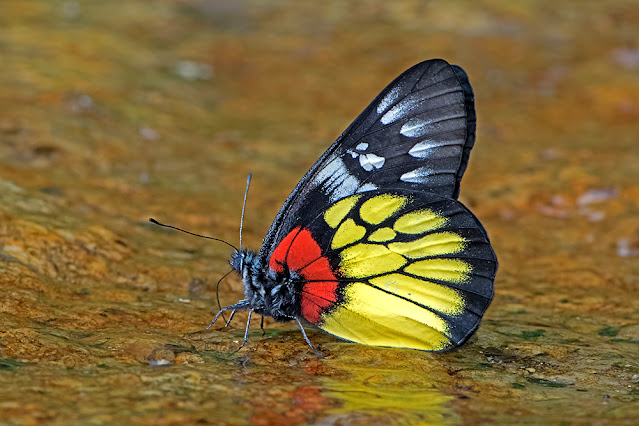
Photo taken at Doi Suthep-Pui National Park, Chiang Mai, Thailand. 460m a.s.l.

Delias pasithoe is found in all countries across Southeast Asia and is instantly recognisable by the red 'collar' at the base of the hindwings on its underside. It is a large butterfly and while the design and colours of the underside of the wings is fairly constant wherever it occurs, the upperside markings can be quite variable, even within the same geographical area. The sexes are visually similar with very little difference in size. Although both sexes visit flowers for nectar, they are more often seen puddling, and sometimes exhibit unusual behaviour when doing so. Most butterfly species puddle on damp sand or at the edges of a pool but this species will sometimes actually stand in shallow running water like in the photo above. It is not known why they do this but as those observed doing this appear to be freshly emerged individuals it may be a way of rapid rehydration.
The species is multivoltine with several broods per annum, even in the colder climates of the northern part of the region. The early stages are not fully known but the larvae are gregarious, meaning that they feed together in groups. In fact, they usually pupate together as well.
Synonyms and previously used names: Papilio aglaia, Papilio dione, Delias aglaia, Delias pandecta, Papilio porsenna
Taxonomy: Animalia - Arthropoda - Insecta - Lepidoptera - Pieridae - Pierinae - Delias - pasithoe
Regional subspecies: Delias pasithoe balabaca (Philippines-Balabac), D.p.curasena (Taiwan), D.p.dione (Nepal), D.p.egialea (Indonesia-Java), D.p.mera (Philippines-Luzon, Mindanao), D.p.pandecta (Philippines-Palawan), D.p.parthenope (S.Myanmar, S.Thailand, W.Malaysia, Singapore), D.p.pasithoe (Bhutan, NE India, Myanmar, Thailand, Laos, Cambodia, Vietnam, S.China). There are several other subspecies listed amongst the islands of Indonesia but further research is needed to determine their validity.
Regional Distribution: Nepal, Bhutan, India, Bangladesh, Myanmar, Thailand, Laos, Cambodia, Vietnam, China, Taiwan, Malaysia, Singapore, Indonesia, Philippines
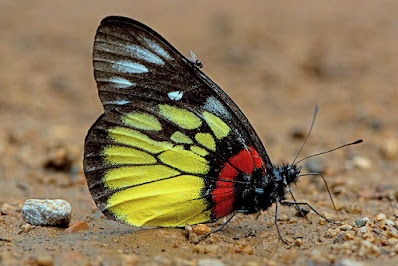 |
| Chiang Dao Wildlife Sanctuary, Chiang Mai, Thailand 540m a.s.l. |
Habitat: Delias pasithoe is found in a wide range of open habitats including montane forests, forest edges, stream banks, and meadows. It is also sometimes seen in urban parks and gardens, and other lowland areas. It has been recorded up to 2300m a.s.l.
Flight time: all year, depending on location Wingspan: 70–85mm
Life History: egg 4-8 days total larval stage (full details are not known) 18-20 days pupa 3-8 days Total egg to adult 27-36 days
All times are approximate and can vary depending on the season and on the host used.
Larval Hosts: Dendrophthoe falcata, Macrosolen cochinchinensis, Scurrula ferruginea, Scurrula parasitica, Taxillus chinensis, Taxillus limprichtii, Taxillus nigrans, Taxillus sutchuenensis (Loranthaceae), Santalum album, Dendrotrophe varians (Santalaceae), Camellia sinensis (Theaceae), Citrus maxima (Rutaceae), Mitragyna rotundifolia (Rubiaceae), Viburnum odoratissimum (Viburnaceae).
Actual host plant used depends upon location and availabilty of plant species.
Adult Food Sources: Nectar - Bidens pilosa, Chromolaena odorata (Asteraceae), Phanera championii (Fabaceae), Zanthoxylum avicennae (Rutaceae), Ligustrum lucidum (Oleaceae), Duranta erecta, Lantana camara, Stachytarpheta jamaicensis (Verbenaceae), Helixanthera cylindrica (Loranthaceae), Prunus serrulata (Rosaceae). Other - mud puddling
%20gallery.jpg) |
| Doi Suthep-Pui National Park, Chiang Mai, Thailand |
 |
| Stachytarpheta jamaicensis, a nectar source |
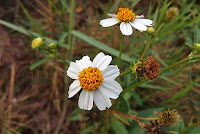 |
| Bidens pilosa, another nectar source |
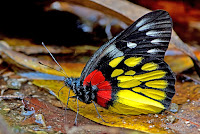 |
| Doi Suthep-Pui National Park, Chiang Mai, Thailand |
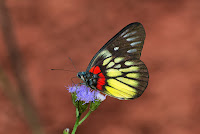 |
| Lamnamkok National Park, Chiang Rai, Thailand |
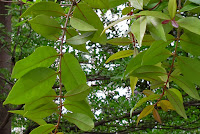 |
| Macrosolen cochinchinensis, a larval host |
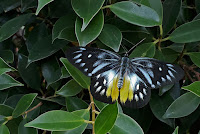 |
| Chiang Dao Wildlife Sanctuary, Chiang Mai, Thailand |
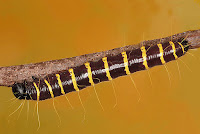 |
| a final instar larva just before pupating |
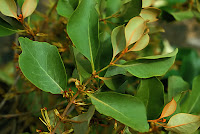 |
| Scurrula parasitica, another larval host |
Links to other pages in this series for species in the same subfamily
